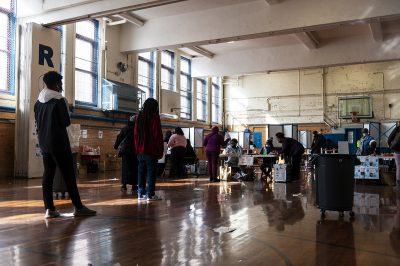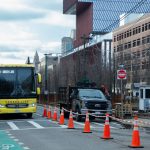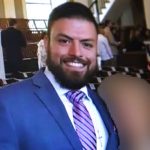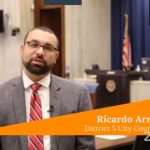Lawmakers and activists held a panel discussion Thursday on redistricting in Massachusetts, emphasizing engagement with communities and researchers in drawing equitable and fair legislative district maps.

Organized by the Lawyers for Civil Rights, panelists from LRC, Massachusetts Voter Table and Worcester Interfaith spoke on the necessity for grouping residents in districts with the same vested interests.
Beth Huang, executive director of the MVT, highlighted the broad impact redistricting could have on neighborhoods.
“We believe that representation matters,” Huang said at the panel. “How we draw districts creates or dilutes opportunities for representation and our ability to have our communities served in the way that they should be.”
Members of the panel also pointed to current examples of the process’ impact. Isabel Gonzalez-Webster, executive director of WI, said some of the disproportionate representation seen in Worcester’s municipal government can be traced back to the city’s voting model.
Since voting for school committee members in Worcester takes place at the city level rather than within each neighborhood, Black and brown voters are overpowered by the voices of white voters, Gonzalez-Webster said.
“Five out of the seven school committee members, including the mayor, live in two of the 50 districts,” she said at the panel. “Can the school committee really relate and understand our kids and the issues that we’re bringing up when they only sit and live in two out of the 50 districts?”
Representing communities of color is a major challenge when drawing state and national voter districts, said Janelle Dempsey, civil rights fellow at LCR.
“Because redistricting is a process that happens every 10 years, it’s not necessarily something that everyone is very familiar with,” Dempsey said in an interview. “So we are working very hard to engage our community partners and community organizations so that people on the ground, who will be affected by this the most, will have a chance to weigh in and have their voice heard.”
She added equitable redistricting can “amplify” the voices of minority communities and ensure that they are still accurately represented by elected officials.
Judy Zaunbrecher, co-president of the League of Women Voters of Massachusetts, said delays in the rollout of the 2020 census and distribution of its data may disrupt plans for drafting fair district maps.
She added that, once released, last year’s census data may not be fully accurate.
“There was a lot of work done in Massachusetts last year by a lot of different groups to ensure that there was a complete count,” Zaunbrecher said. “But there still is concern, again, because of the pandemic and also actions by the previous administration that there may not be an accurate count.”
With the 2020 census completed, the next step of redistricting means engaging the community with the process, Zaunbrecher said. She added that can be a more difficult task than getting out the vote.
“Redistricting will require us to be more involved,” Zaunbrecher said. “Talking with our neighbors, talking within our groups, pulling together testimony and then having people give that testimony.”
As lawyers and activists work to engage communities in pushing for fairer and nonpartisan district maps, researchers are creating innovative methods to tackle redistricting from a mathematical perspective.
The MGGG Redistricting Lab at Tufts University’s Tisch College is applying data science to drawing voter district boundaries.
“Redistricting is actually a very interesting math problem,” said software engineer and research associate Parker Rule. “There are a whole bunch of techniques that you can use to draw districting plans.”
He added that redistricting means more than just ensuring similar populations of people between regions.
“There’s kinds of things that are more subjective and harder to measure,” Rule said, “that can’t really be handled very well by computer.”
MGGG tackled that complexity with a two-pronged approach: setting boundaries around the maps that humans can draw and providing a collection of public tools that encourage a more transparent redistricting process, Rule said.
“What we set out to do is develop these algorithms that take that map and draw a whole bunch of maps in its universe and say, ‘Here are a bunch of reasonable maps,’” Rule said. “Maybe they’re not perfect. Maybe they wouldn’t have been drawn exactly like this by a human, but they meet the base criteria and they’re reasonable.”
While potentially helpful, Rule said the technology alone won’t fix gerrymandering and inequitable districting. MGGG’s mathematics technology will be an added device on a larger toolbelt of change agents.
“It’s a tool that exists within a broader framework of reform and legal challenges,” he said. “It’s not by itself going to solve the redistricting problem, but it can ultimately help us chip away at some of the more technical aspects of it.”
Technology has improved greatly since the last census, said Brady Baca, civic engagement coordinator at Boston City Councilor Julia Mejia’s office.
Baca said he was optimistic citizens will be more involved in their districts in the next 10 years.
“2020 is a lot different than 2010,” he said. “There really is a culture and movement building in Boston to get people more civically engaged, particularly with [those] less focused on local issues like municipal redistricting.”














